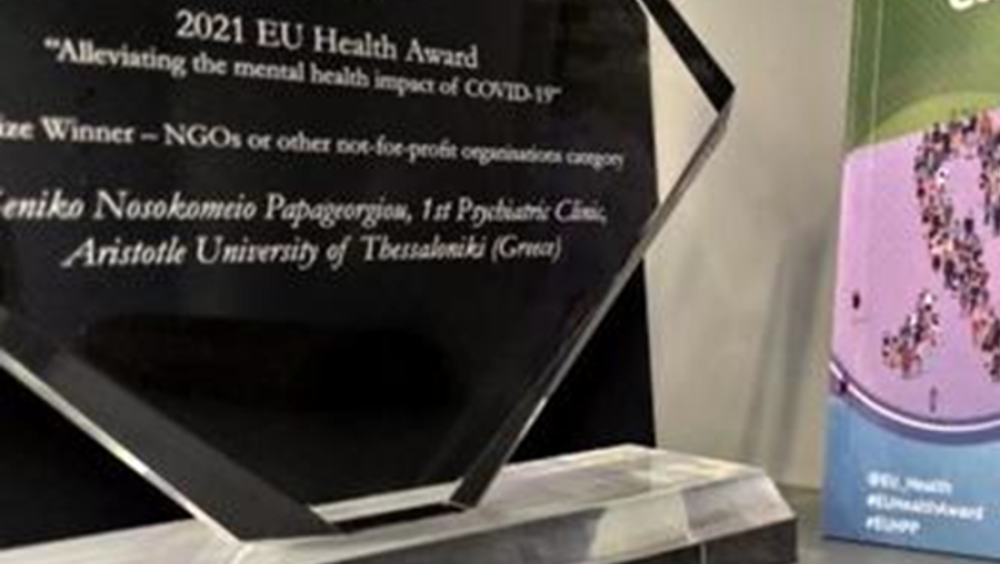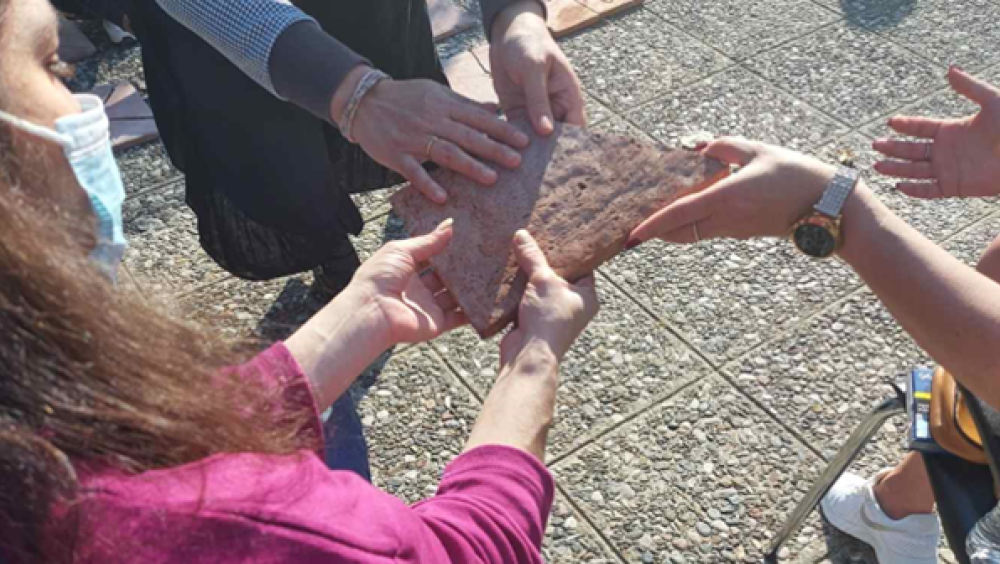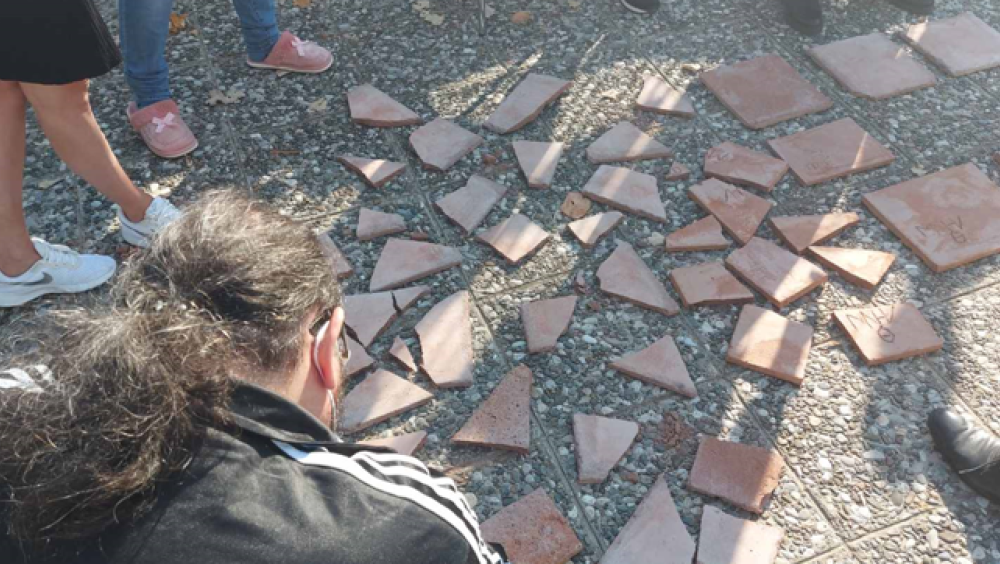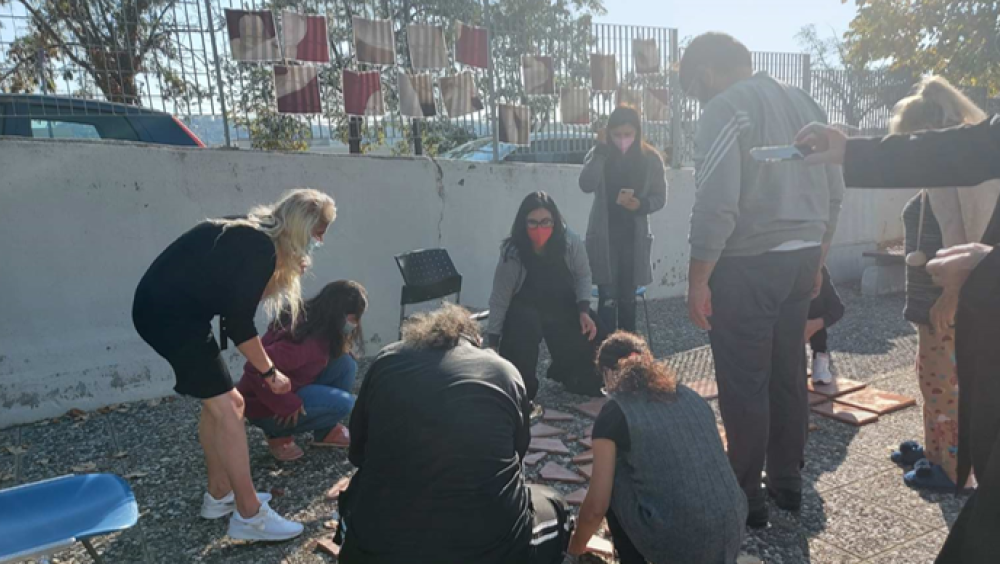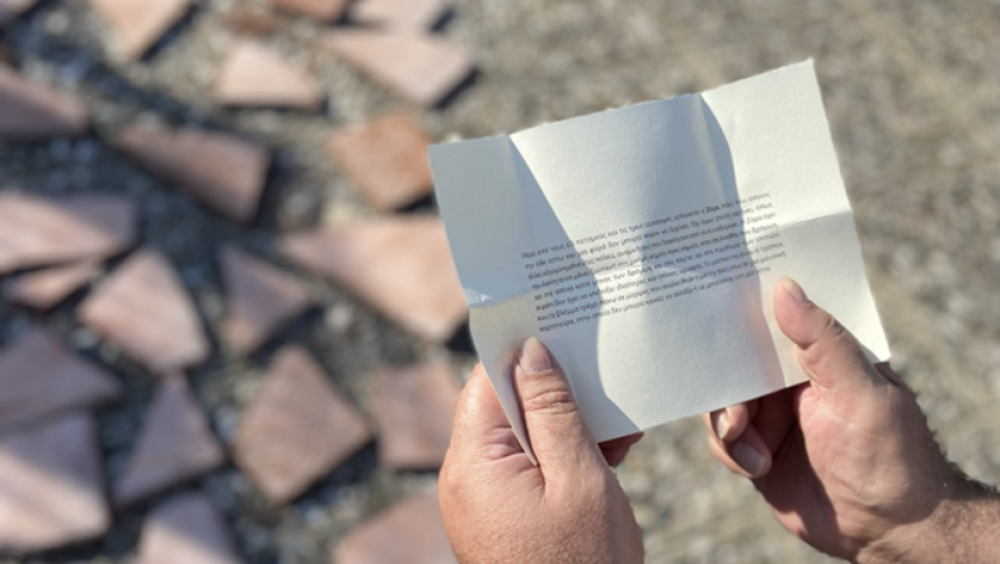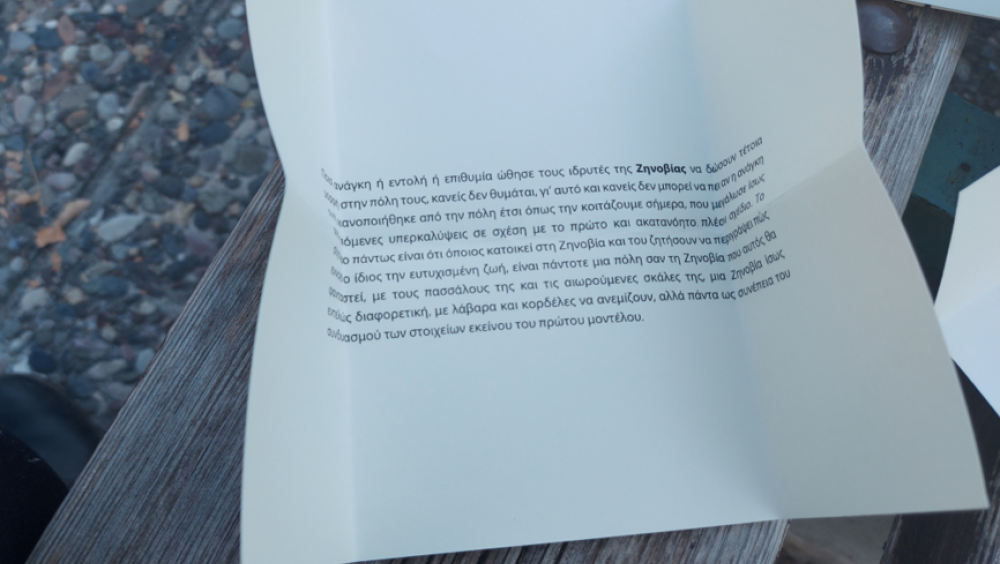“The Gardens with the Stones: archaeological landscapes in the architectural environment of modern cities”
An interdisciplinary experimental Archaeological Action called "Layers" was designed by the Ephorate of Antiquities of the Region of Thessaloniki, in the context of the European Heritage Days,in direct collaboration with the 1st Psychiatric Clinic of the Aristotle University of Thessaloniki and the Papageorgiou Hospital.. It was based on the thematic axes of Inclusion and Sustainability, and its main purpose wastwofold-to investigate and evaluate theoverall impact of Antiquities and Cultural Heritage on people with mental illnesses and methodologically establish a Cultural Heritage-based Psychological Intervention with emphasis on Antiquities. In particular, the action was initially designed on the occasion of the 2021 EHD and the theme of Inclusion (Heritage: All Inclusive!) and, subsequently, on the basis of a positive evaluation, it was developed during the 2022 EHD under the theme of Sustainable Heritage, to continue until October 2023 as a regular cycle of pilot implementation actions. The starting point of the archaeological rationale was the perspective of the updated roles that Archaeology can and should equally assume within the bounds of a contemporary society and contribute to individual and collective well-being focusing on vulnerable social groups. In terms of research approach, a dialectical correlation between archaeological interpretation and psychotherapeutic process was attempted aiming to investigate the potential function of antiquities as a therapeutic stimulus for the mentally ill.
During its implementation so far, the Action has been addressed mainly to inpatients of the 1st Psychiatric Clinic of the Aristotle University of Thessaloniki, either long-stay inpatients or patients admitted during the on-call hours at the Papageorgiou Hospital, while outpatients have also participated. Medical and nursing staff and trainee psychologists have also attended as participants. This University Clinic has scientifically undertaken the quantitative and qualitative evaluation of the Action in order to gain an in-depth understanding of its impact on the participants.
Let's pick up the thread from the beginning. Summer 2021. I have just closed the door of the Psychiatric Clinic at Papageorgiou Hospital in Thessaloniki. Stepping out into the fresh air and gazing at the metallic surface of the sea in the distance a thought strikes me -how right that British traveller was one afternoon in the 19th century when he saw the Thermaikos Gulf in the afternoon light like a huge mirror!
As I descend the stairs to the exit I wonder how I could possibly repay the care and psychological support that the hospital psychologists have provided throughout my IVF treatment over the last two years.
This is the period when I am planning the European Heritage Days celebrations at the Abbott-DelaSalle historic garden in Pefka, and I am extremely passionate about it. Their planning that year was about the experiment of creating a performance that combined archaeological narrative with a visual, musical and theatrical evocation of the historic garden and aimed to encourage the active participation and interaction of many different groups of people and artists moving freely within the natural environment of the garden. This is after all the year we celebrated inclusion.
But this particular group could not be transported outside the clinic. So, I thought that instead of transporting the patients to the historical garden, we would move the garden to the psychiatric clinic. I thought it was a wonderful opportunity! The aim of the action was to transfer the experience of the cultural landscape to a place outside of it involving groups of people who, due to special restrictions, cannot visit archaeological sites and monuments freely or even worse exclude themselves from visiting them due to their difficulties.
The whole action unfolded on the thread of the archaeological narrative, focused on the process of creating archaeological landscapes within the contemporary urban environment and was enriched with images of changes in the landscape of Thessaloniki as reflected in its literatureattempting to activate multiple mental representations in the participants. This was followed by an immersion activity focused on the process of constant reconstitution and transformation of a city through landscapes-snippets of its history, which was commemorated by breaking a jug of bricks and rearranging their fragments, with emphasis on the role of gaps in the new composition. Finally, to enhance the cognitive representation of this process, the immersion activity was invested with the reading by all the participants, successively and in random order, of extracts from the literary work "Invisible Cities" in which the author Italo Calvino discusses precisely this process and the multiple image-representations of the landscapes of an archetypical city.
This first contact with people with mental illnesses was an immersion experience for us. The response of the participants was also meaningful and with genuine interest that was spontaneously expressed. The insight we gained regarding mental illness is that it is a condition that weighs mainly on the sufferers themselves and does not respond to social prejudices. Moreover, what moved us was that their need to participate was ardent. The effect of the action was characterized by the psychiatric clinic as highly positive for the patients.
The framework of the European Heritage Days was used for the second time in order to develop this experimental action on the basis of the positive evaluation of this first workshop. So, the Pilot Two-Day Workshop of "Layers" was specifically designed in the framework of EHD 2022. This was a Pilot action which was followed by a cycle of eight other archaeological actions completed in October 2023 in order to form a Feasibility Study for a heritage intervention based on antiquities and cultural landscape.
The core of the action was designed as an archaeological walk promenade in the historic centre of Thessaloniki. Under the broad perspective of the UNESCO’s Historic Urban Landscape (HUL) Approach about the sustainability of historic cities, we sought to approach the historic urban landscape of Thessaloniki from archaeological viewpoint.
Developed around landmark monuments included in the UNESCO’s World Heritage List, which constitute fragments of the underlying Byzantine city that appear in the contemporary urban space also in a sense of urban “voids”, the promenade followed urban design axes drawn after the fire that almost completely destroyed the centre of the historic city in August 1917.
The so-called “Hébrard Plan” was a holistic planning proposal that served the vision for the economic development of Thessaloniki taking into consideration the historic past of the city as a design value as well. Thus, a modern urban landscape that was based on the historical identity of Thessaloniki was directly linked with the city’s sustainability. In the redesigned urban fabric, the monuments that survived the fire are selectively incorporated as focal points connected with grid axes and diagonals and were invested with new meanings. In terms of contemporary experience, these visually interconnected archaeological landscapes along with the historic urban axes ensure the spatial coherence and perception of the urban landscape through the dynamic synthesis of multiple partial or fragmentary views.
The hypothesis formulated was the following: experiencing the historic urban landscape through an archaeological perspective act as a stimulus with a potential therapeutic effect on the workshop participants’ individual perception of their own psychic space and time. We specifically designed a walking route through the historic city—built around key-monuments and their connecting axes, also including the identification of at least two archaeological reference layers to establish a historical line of sequence—to serve as a paradigm for the participants.
Our underlying belief is that the archaeologically legible layering of the transformations that the structure and landscape of a historic city has undergone over time due to ‘traumatic’ events such as earthquakes and fires, as a result of natural deterioration and collapse or due to intentional demolition, could serve as tangible evidence that reconstruction is an absolutely feasible process. The city can be recreated through the effective management of the elements of its past —retaining, incorporating or discarding them — and through their creative reassembly, along with the integration of new elements. In this sense, one could argue that the city ‘self-actualises’ itself in every temporality as a new historical whole.
Τhe impact I expect my story to have is to raise awareness and urge for the inclusion of people with mental illness and to highlight the power of culture to improve the quality of their life.
Our project proposal is the development of a heritage-based intervention to promote well-being in patients with mental illness, specifically focused on archaeological interpretive perspectives, antiquities and cultural landscape.
Since the feasibility study has been carried out and its scientific results are being published, we estimate that the main research can be carried out within a year, with eight main actions.
Patients treated at 1st Psychiatric Clinic, AUTH form a diverse and multifaceted group that includes people from late adolescents to people belonging to the fourth age, people born and raised in Thessaloniki to people who arrived in Thessaloniki as refugees.
Despite their diversity, patients face common barriers such as stigma and lack of social inclusion on top of their health issues. In social settings, individuals with mental health problems are often treated on the basis of stereotypes and prejudices, resulting in stigmatisation and exclusion. It may happen consciously, with others deliberately avoiding or ignoring them, or unconsciously, where others may not even realize they are excluding someone. Either way, they are facing persistent social exclusion and negative social experiences that disconnect the from their community and limit their opportunities for personal, professional or social development. It is important to bear in mind that such prejudices are multiplied when the patient belongs to a minority group. Many patients face linguistic and cultural barriers. Patients who are not fluent in the dominant language face miscommunication issues regarding their social interactions which leads to even more isolation.
By recognising the overlapping systems of discrimination that different groups face, we can better address these issues and by exploring intersectionality we are allowed to appreciate the complexity of people's lives and provide person- centred care.
